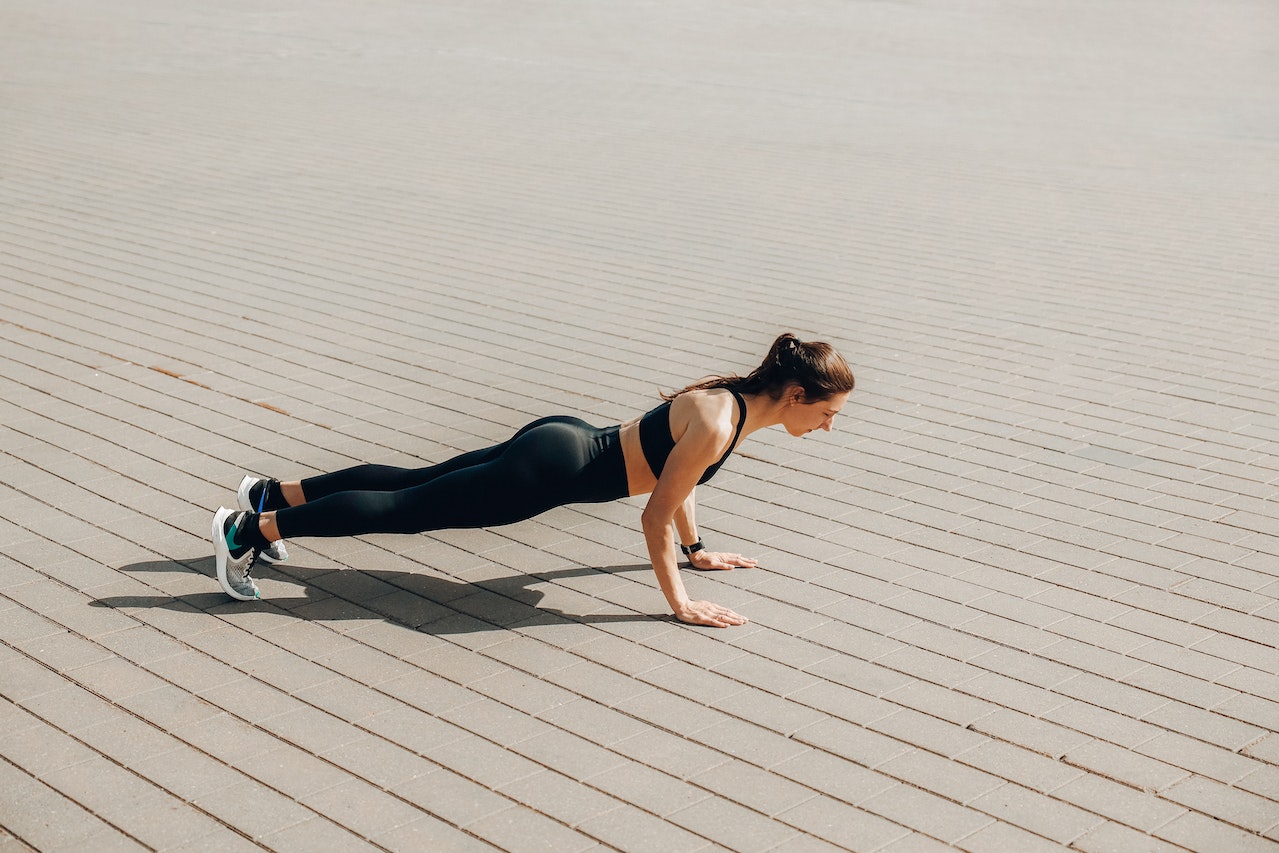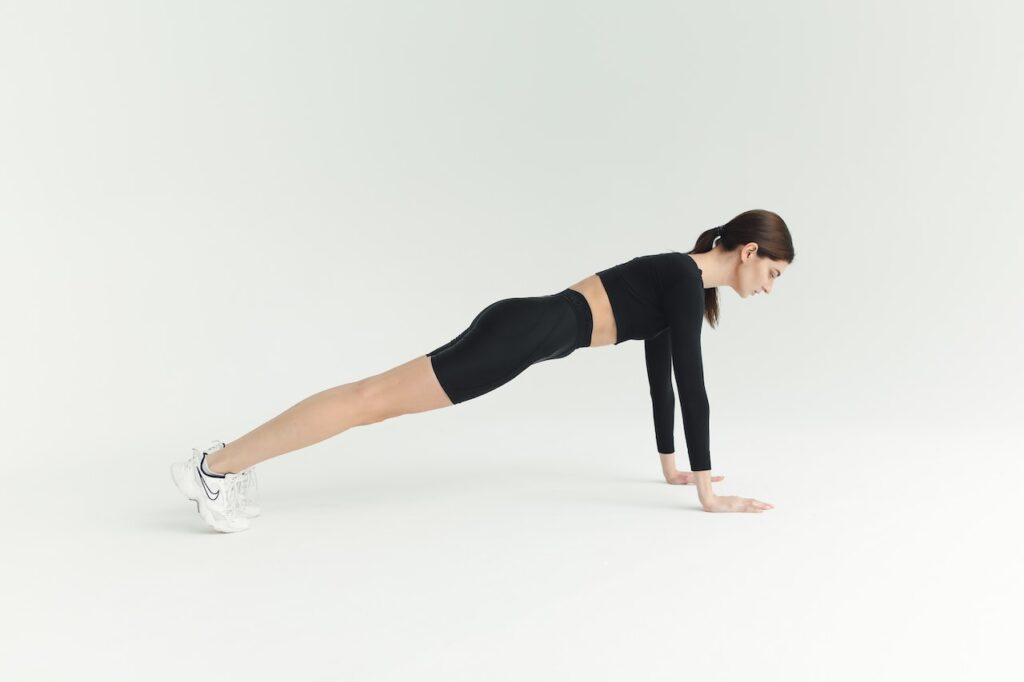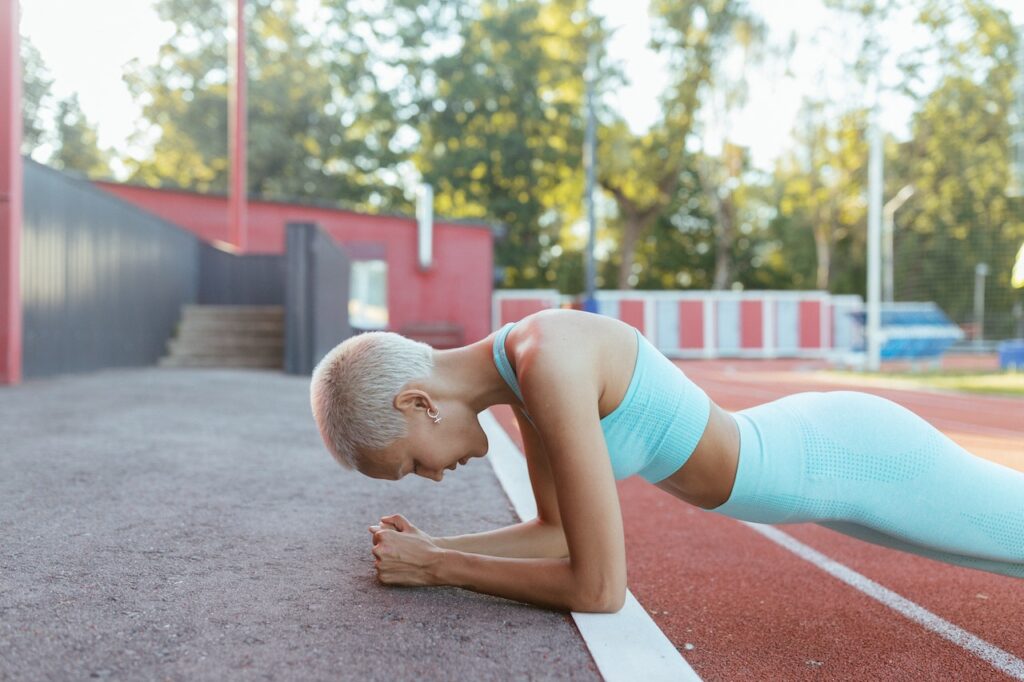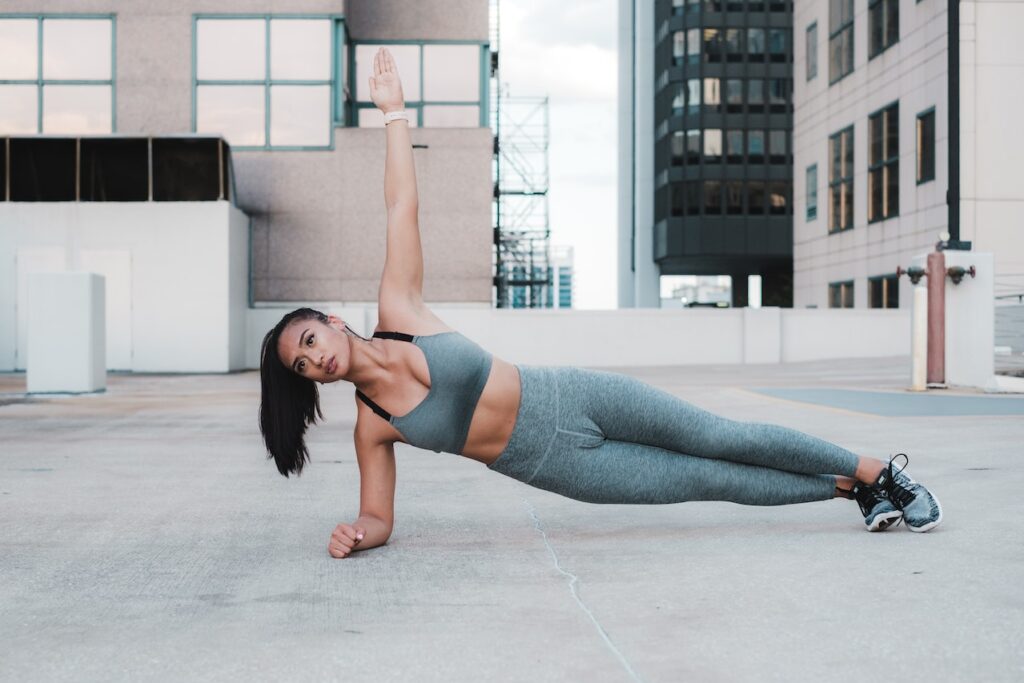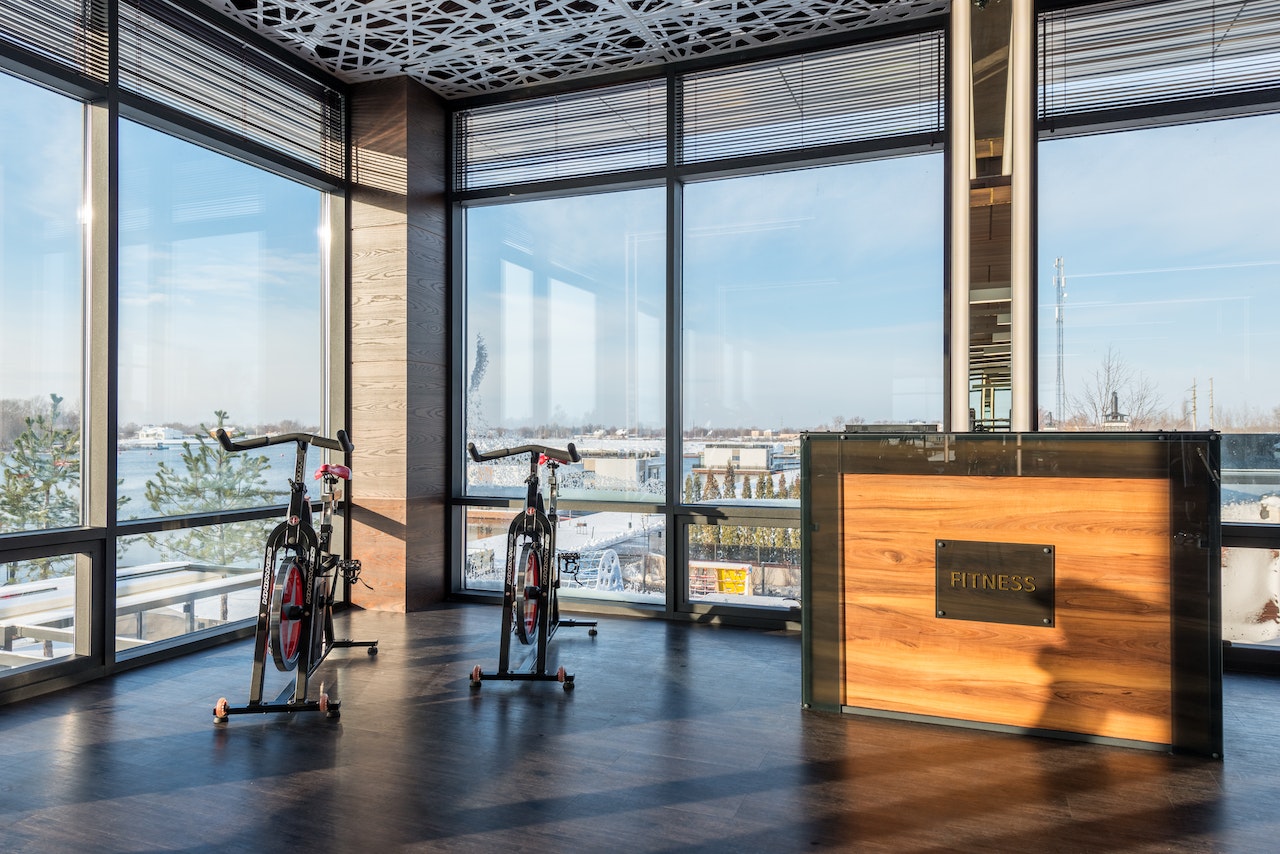Are you up for a challenge? Holding a plank for 10 minutes may seem impossible, but you can achieve this impressive feat with our simple tips! Planks are a fantastic exercise for strengthening your core muscles and improving your overall fitness, and that’s why it should be part of your workout routine. Read this article and learn techniques to help you conquer the 10-minute plank challenge.
Holding a plank for 10 minutes may be daunting, but with the right mindset and approach, it’s achievable for anyone.
In this article:
- Tips for holding a plank for 10 minutes
- The importance of proper form
- The mental game of planking
- Variations to help you hold a plank for 10 minutes
- Why planks are good for you
TIPS FOR HOLDING A PLANK FOR 10 MINUTES
Starting small and gradually building up is one of the essential tips for holding a plank for 10 minutes.
This approach allows your muscles to adapt and become stronger over time, reducing the risk of injury and helping you achieve your goal more effectively.
Begin by holding a plank for 20-30 seconds at a time, and gradually increase the duration of each hold as you become more comfortable. Aim to add 5-10 seconds to your hold time each day or week, depending on your fitness level and goals.
Remember that building core endurance takes time and patience. Believe in yourself, and you’ll soon be amazed at what you can accomplish with consistent effort and dedication.
THE IMPORTANCE OF PROPER FORM
When holding a plank for 10 minutes, paying close attention to your form throughout the exercise is especially important.
To perform a proper plank, begin in a push-up position with arms straight and hands shoulder-width apart. Engage your core muscles and hold your body straight from your head to your heels. Make sure your hips don’t sag or pike up. One of the common mistakes people make when holding a plank is letting their hips sag toward the ground, which can put undue stress on your lower back.
Another critical aspect of proper form is breathing. You should take a deep breath through the nose and out through your mouth. Maintaining a consistent rhythm throughout the exercise will help you stay focused.
Thinking about the proper form can be challenging, especially as you become exhausted from a long plank hold. However, by staying focused on your form and engaging your core muscles, you’ll maximize the benefits of the exercise. Just be persistent. Over time, proper form will become second nature, and you’ll be able to easily hold a plank for 10 minutes while feeling the burn in your core muscles.
THE MENTAL GAME OF PLANKING
Holding a plank for 10 minutes is not just a physical challenge; it’s also a mental one. Developing a positive and determined mindset is crucial to succeeding in this endeavor. Here are some mindset strategies that can help you hold a plank for 10 minutes:
- Focus on your why: Consider why you want to hold a plank for 10 minutes. Is it to challenge yourself? To improve your core strength? To achieve a fitness goal? Remember your why as you hold the plank to stay motivated and focused.
- Break it down: Rather than thinking about holding a plank for 10 minutes straight, break it down into smaller goals. Hold the plank for 30 seconds, then a minute, and so on. Celebrate each small victory and use it as motivation to keep going.
- Stay present: Rather than focusing on the time or how much longer you have to hold the plank, focus on your form, breath, and the present moment. That can help you stay focused even as the exercise becomes more challenging.
Using these mindset strategies, you can overcome mental barriers and hold a plank for 10 minutes with confidence and ease. Remember to stay positive, focused, and determined, and enjoy the feeling of achieving your goal.
VARIATIONS TO HELP YOU HOLD A PLANK FOR 10 MINUTES
Doing the same workout can become monotonous and hinder your progress. One way to overcome this is to incorporate variations into your routine.
- Side planks, for example, require you to balance on one arm and stack your feet on each other. This variation strengthens your oblique muscles and improves overall stability.
- Plank jacks, on the other hand, add a cardio element to the exercise by mimicking the movement of a jumping jack. This variation challenges your core muscles differently, making your workout more well-rounded.
- Spiderman planks, where you bring your knee to your elbow as you hold the plank, target your oblique muscles and add a dynamic movement to the exercise.
- Forearm planks, where you balance on your forearms rather than your hands, challenge your shoulder stability and can help you hold a plank for more extended periods.
Mixing up your plank routine with different variations helps you achieve your goal of holding a plank for 10 minutes and keeps your workout exciting and engaging. Try the variations, and you will never get bored with planking.
WHY PLANKS ARE GOOD FOR YOU
Planks are an excellent exercise for improving core strength, posture, and overall fitness. That is an isometric exercise involving holding a static position rather than performing a dynamic movement. Isometric exercises can effectively strengthen specific muscle groups without putting undue stress on joints or other body parts.
One of the main benefits of planks is their ability to strengthen your core muscles. Your core muscles are critical in maintaining good posture, balance, and stability. Strengthening these muscles can help improve your overall body alignment and reduce the risk of injury during other physical activities. Also, a strong core can help alleviate back pain by supporting your spine and improving your posture.
Planks also require you to engage your stabilizer muscles, the small muscles that help support your joints and maintain your balance. By strengthening these muscles, planks can help improve your overall balance and coordination, which is especially important as you age.
Another benefit of planks is their ability to improve your flexibility. Planks engage multiple muscle groups, including your shoulders, hamstrings, and calves, which can help improve your overall range of motion and flexibility. This increased flexibility can also reduce the risk of injury during other physical activities.
Planks can increase your metabolism and burn calories. As a full-body exercise, planks engage multiple muscle groups and can help boost your metabolism. This increased metabolism can help you burn more calories throughout the day, even when you’re not exercising.
So, if you haven’t already, include planking in your daily exercise routine and make your next fitness goal a plank for 10 minutes.
_____
Holding a plank for 10 minutes is a challenging yet achievable goal that requires dedication and effort. Follow the tips and techniques outlined in this article to improve your plank endurance and strengthen your core muscles. Start today, set a new fitness goal, and conquer the 10-minute plank challenge!
This post may contain affiliate links. You can read the affiliate disclosure here.

